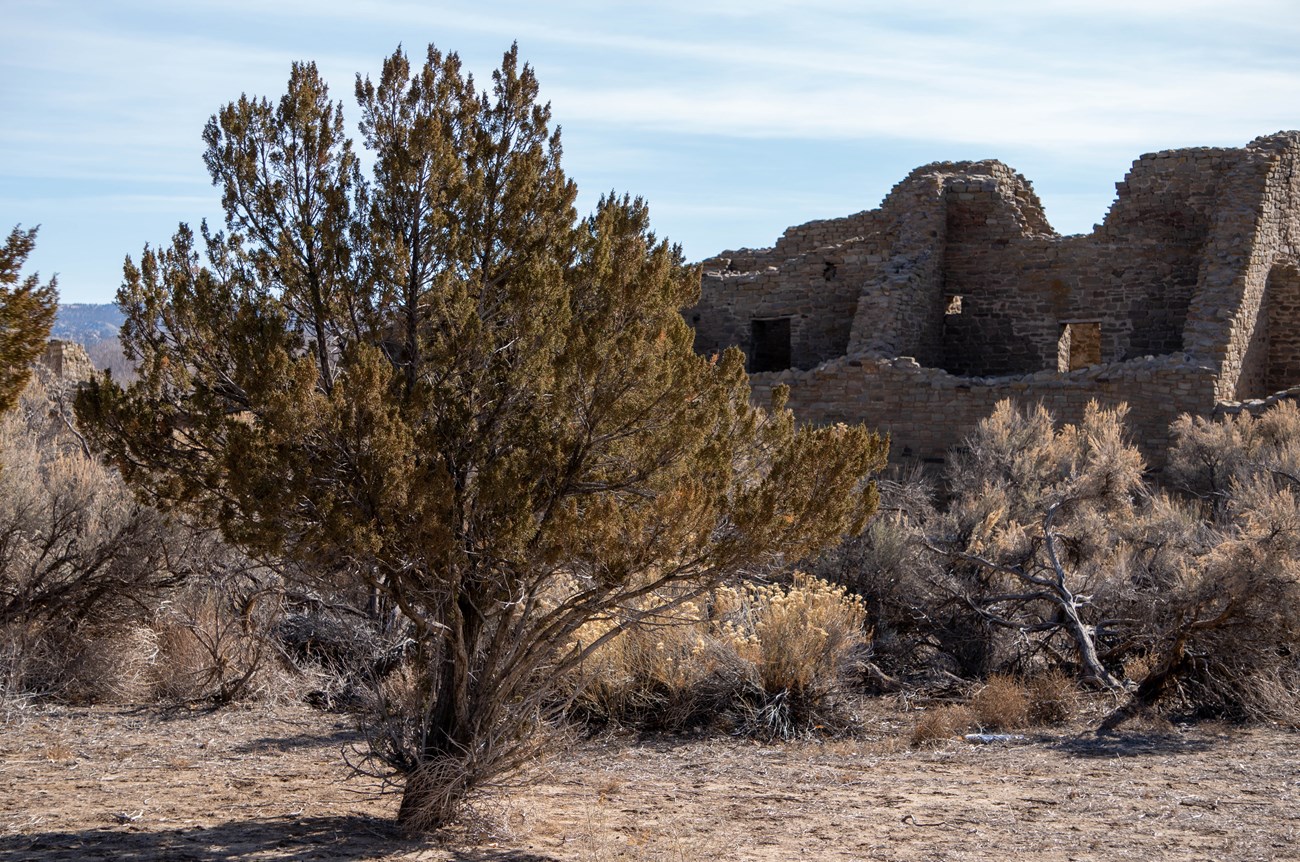
Emilee Helton, NPS/BLM The ancestral Pueblo people who lived at Aztec Ruins made careful use of raw materials and resources they found in their environment to make tools, process food, fabricate clothing, create art, and build their Great Houses and other structures. They traveled long distances on foot, maintaining exensive trade networks to obtain resources that were not locally available. As you tour the Great House at Aztec West, think about our society, and how, even today, we are incredibly dependent on trade networks. What do you have around your house that comes from plants, animals, or minerals? Which of those items come from local sources? Which of them come from far away? Are there some items, like fruits and vegetables, that you can get locally at some times of the year, but which have to be imported from farther away during the rest of the year?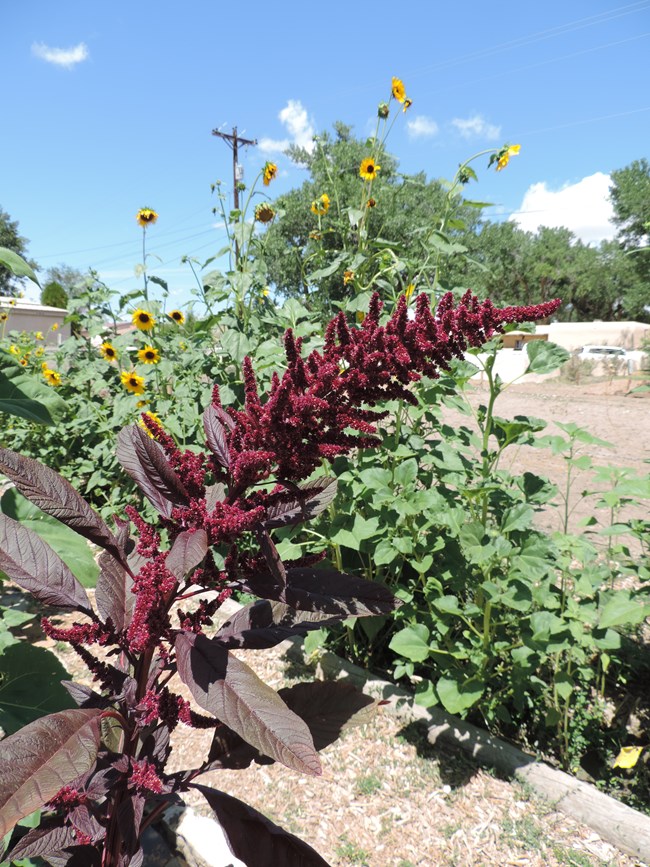
Cindy Jacoby, NPS What Was Available Locally?PlantsJust like almost all societies, ancient and modern, the ancestral Pueblo people depended on a variety of plants to survive. By the time that the Great Houses were built here, corn, squash, and beans had all been domesticated, and the ancestral Pueblo people cultivated many varieties of these plants, adapted to different microclimates and conditions. They also ate many wild plants, including some that they let grow in their farms alongside domesticated crops. You can read more about ancestral Pueblo agriculture and learn about the monument's heritage garden on this page.Meanwhile, other wild species such as yucca, greasewood, sage, four-wing saltbush, willows, and rushes were collected in surrounding areas and used to make a variety of items. Yucca fibers were used to make cords, ropes, and strings, with leaves from the same plants being made into sandals, paintbrushes, and needles. Arrows were made out of rushes and willow branches. Although relatively few trees grow in the area around Aztec Ruins, the ancestral Pueblo people made good use of the trees that do exist here. Juniper was used as fuel and as a construction material, while the resin from piñon pine trees functioned as a waterproofing agent for baskets; both trees also provided sources of food in the form of juniper "berries" and pine nuts. Cottonwood trees, named for their soft trunks, could easily be hollowed out and converted into baskets and other storage containers once they were cut down. 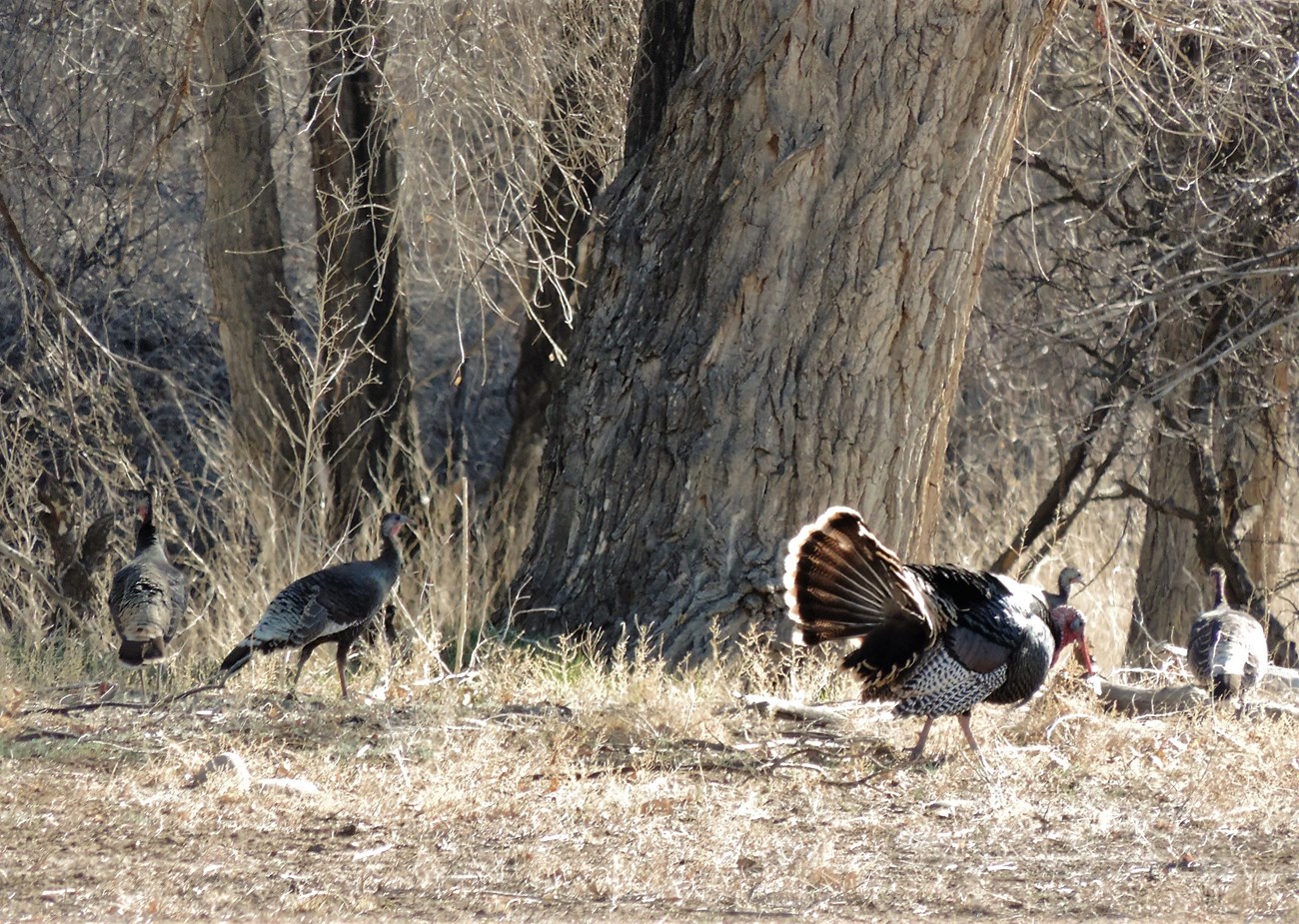
NPS Photo 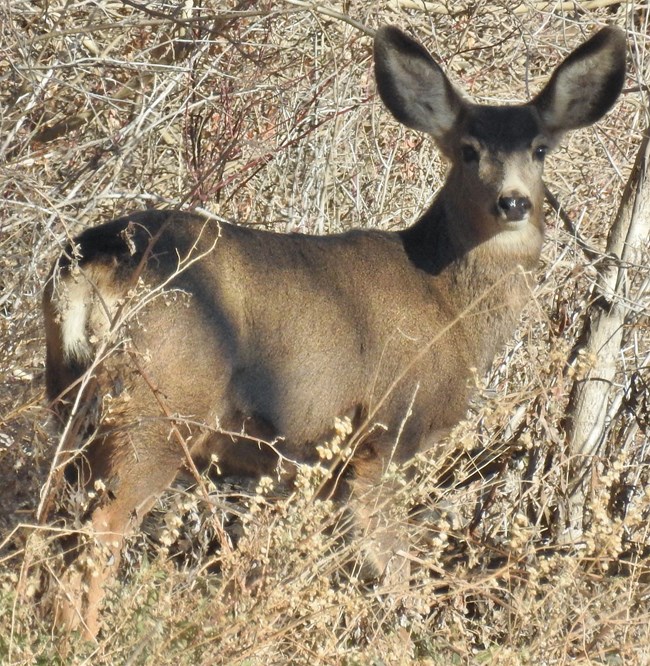
Brenda Landdeck, NPS AnimalsThe ancestral Pueblo people hunted a variety of animals that lived nearby, including bighorn sheep, mule deer, elk, bears, cottontail rabbits, rodents such as prairie dogs and rock squirrels, and several bird species. In addition to eating the meat, they used bones from these animals to make awls, scrapers, beads, whistles, needles, and gaming pieces. They also domesticated turkeys for their meat and feathers. Turkey feathers, alongside fur and skins from the mammals they hunted, were used to make items such as blankets, robes, and footwear. Sinews, or tendons, from animals were dried and wrapped around the ends of reed arrows and knives, a technique that kept the tools from splitting. Trout and other fish were also present in the Animas River, although in general, the ancestral Puebloans seem to have eaten fish only sporadically.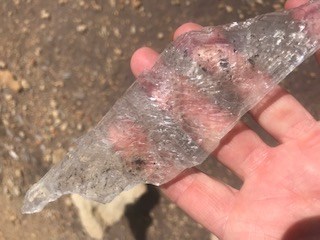
NPS Photo Rocks and MineralsRocks such as siltstone, greywacke, and sandstone are all found in the San Juan basin, and ancestral Pueblo people quarried building materials from outcrops of these rocks. In addition, they collected round cobblestones from the Animas River. Tools such as hammers, mauls, axes, and the manos and metates used to grind corn were fashioned from stone; Pueblo societies did not have metal tools until they were introduced after contact with Europeans. Most of Aztec West is built out of sandstone, which was quarried several miles away; mauls and hammers used for quarrying have been found both at the Great House itself and at their quarries several miles away. The stone tools were often made from cobblestones, since the cobblestones are often made of granite, chert, gneiss, and other rocks that were harder than sandstone. Occasionally, cobblestones were used instead of sandstone as a building material, which can be observed along the trail at Aztec West. The green rock stripes on the western wall are made of greywacke, an uncommon rock of marine origin that is found at a few nearby outcrops.The ancestral Pueblo people also made extensive use of locally available minerals. They collected hematite, also known as "rust" when it forms on iron surfaces, and several varieties of gypsum, including selenite. Hematite was used to make paint sticks, pigments, and beads. Selenite and other forms of gypsum were fashioned into jewelry. You can visit the geological connections page to read more about the geology of the area and how it influenced ancestral Pueblo culture. 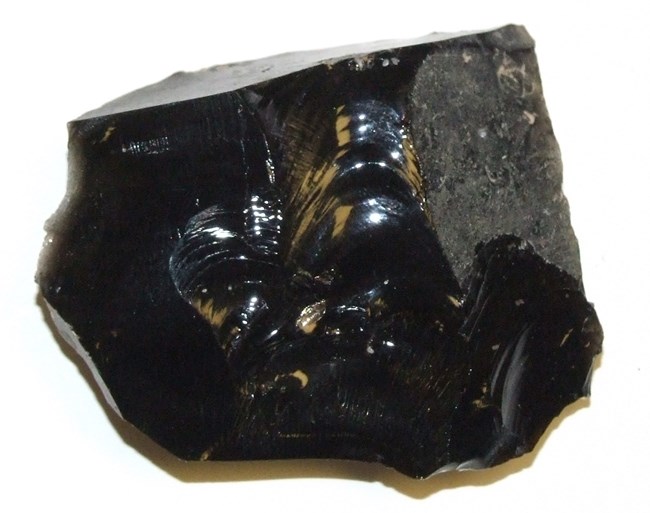
NPS What Could They Obtain Nearby?Some items found at Aztec Ruins are made of materials that, while not present in the immediate area, were brought in from areas that are a short drive away today, though in ancient times traveling to these locations and transporting the goods would have involved a longer and more arduous trip on foot.Obsidian, or volcanic glass, is very sharp and thus highly useful as a material for projectile points and cutting tools such as knives and scrapers. A wide variety of American Indian groups have used obsidian, and tools made of volcanic glass occur among the artifacts recovered at the Great House. Although obsidian is not found in this area, it is abundant in the Jemez Mountains, about 85 miles to the southwest. The ancestral Pueblo people also traveled 125 miles to an area just south of modern Santa Fe, in order to collect turquoise. Turquoise is found throughout the southwest, often in association with copper ore and other copper minerals. Highly valued for jewelry by modern Pueblo and other American Indian peoples, turquoise was, likewise, treasured in past times, and pendants, ear ornaments, beads, and bracelets made of turquoise have been found at Aztec Ruins. Throughout history, salt has been highly valued as a preservative, and this was especially true before the advent of canning and refrigeration. Modern Pueblo peoples have traditionally made pilgrimages to gather salt in playas, or dry lakebeds, near the present day location of Zuni Pueblo and western Arizona. It is highly likely that ancestral Pueblo people made these pilgrimages as well. One of the more impressive feats accomplished by the ancestral Pueblo people was transporting lumber and limestone from the San Juan Mountains, in modern-day Colorado and over 40 miles away, south to Aztec. They accomplished this without vehicles, wagons, wheels, or draft animals like horses and oxen. The Ponderosa pine, Douglas fir, and aspen in the mountains provided lumber that, overall, made better building materials than what was available locally; trees were also much more abundant up there. The high-quality limestone mined in the area was, likewise, brought south and used to make foundation stones that supported the columns in the Great Kiva. It is remarkable to consider how much material the ancestral Pueblo people were able to transport using only human energy. 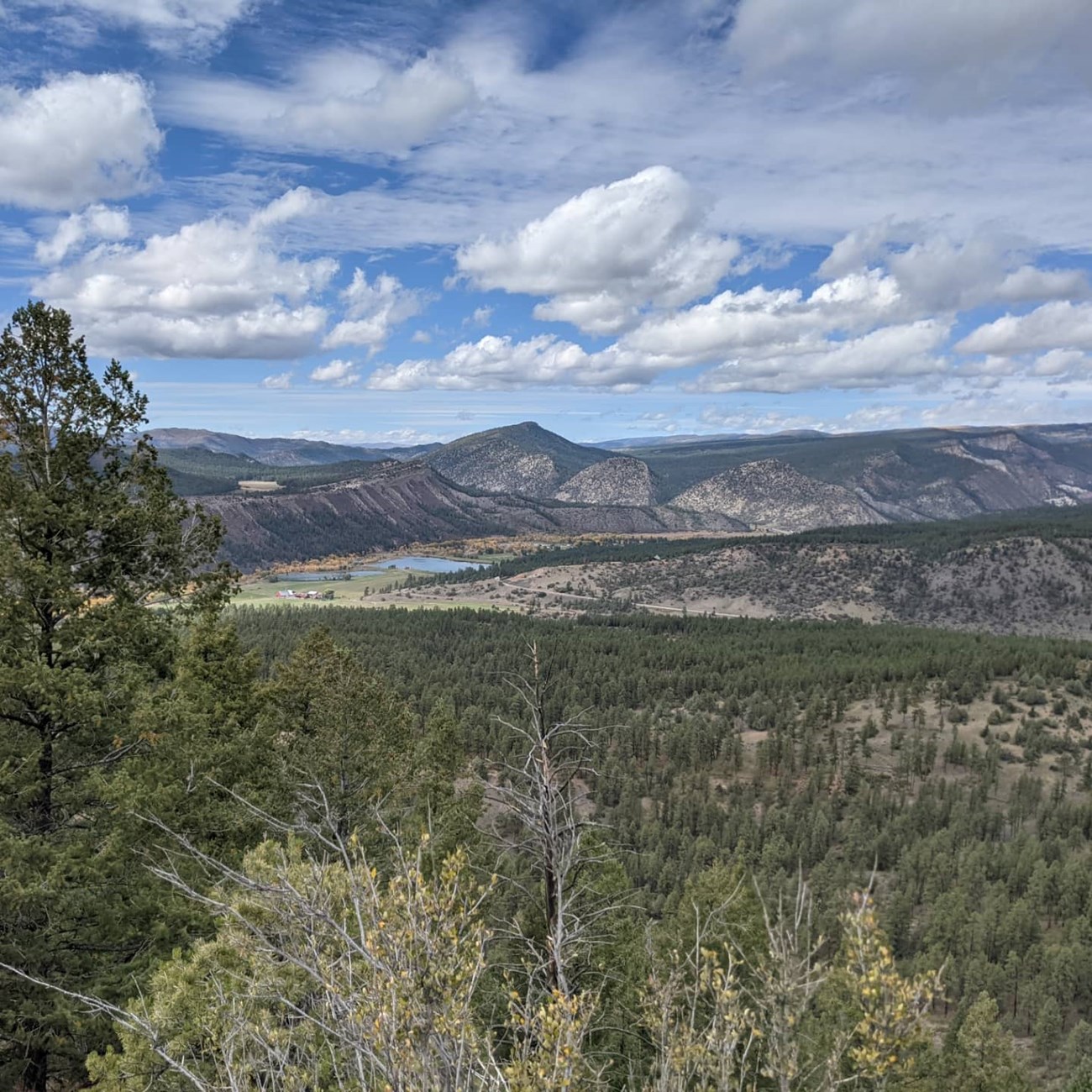
Nicoletta Browne, NPS 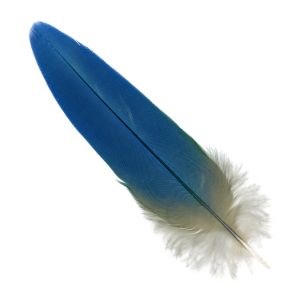
NPS Photo What Did They Trade For?Not only did the ancestral Pueblo people travel remarkably far to obtain materials, they traded for other goods with American Indians who lived even farther away. Their trade networks extended as far away as northern Mexico, the Gulf of California, and the Santa Barbara Channel.Excavations at Aztec Ruins have yielded three skulls, a complete skeleton, and one feather from a macaw (a type of parrot), with the feather still retaining its blue and red colors. The macaws originated in Mexico, hundreds of miles away, and were almost certainly brought here live. Their colorful feathers were valued for their beauty and rarity and were used in ceremonies. In addition to the macaws, trade with people indigenous to north-central mexico brought various objects made out of copper, such as beads and bells used during ceremonial dances. Although this trade route would have existed before the Aztec empire was at its height, at least some of the people the ancestral Pueblo traded with would later form part of the Aztec empire; this is, thus, the closest real connection between the ancestral Pueblo people who lived at what is now known as "Aztec" Ruins, and the actual Aztec empire. Considering how far the San Juan basin is from the ocean, a remarkable number of seashells have been found at Aztec Ruins. Some have been identified as coming from species that live in the Gulf of California, where the Colorado River (which the San Juan river empties into) drains to the sea. Others came from even farther, along the modern central California coast, where the Chumash people live. Shells were used to make ornaments, jewelry, and musical instruments, such as trumpets and jinglers that would be attached to a ceremonial dancer's clothing in order to make sound as the dancer moved. You can visit our Echoes from the Past page to learn more about how items like these were used to make musical instruments. A number of plant products from species not native to the San Juan basin have also been found at Aztec Ruins. For example, walnut trees do not grow here, but they occur in Arizona and southwestern New Mexico. The ancestral Pueblo people clearly traded to obtain walnuts, potentially as a food source, and also to use the shells in order to make beads and charms. Although there is no evidence that cotton was grown here, twisted and braided cotton cord, along with cotton clothing, are among the items recovered during excavation, and it is likely that the items came from what are now southwestern Utah and southern Arizona, both of which are regions where cotton is still grown today. 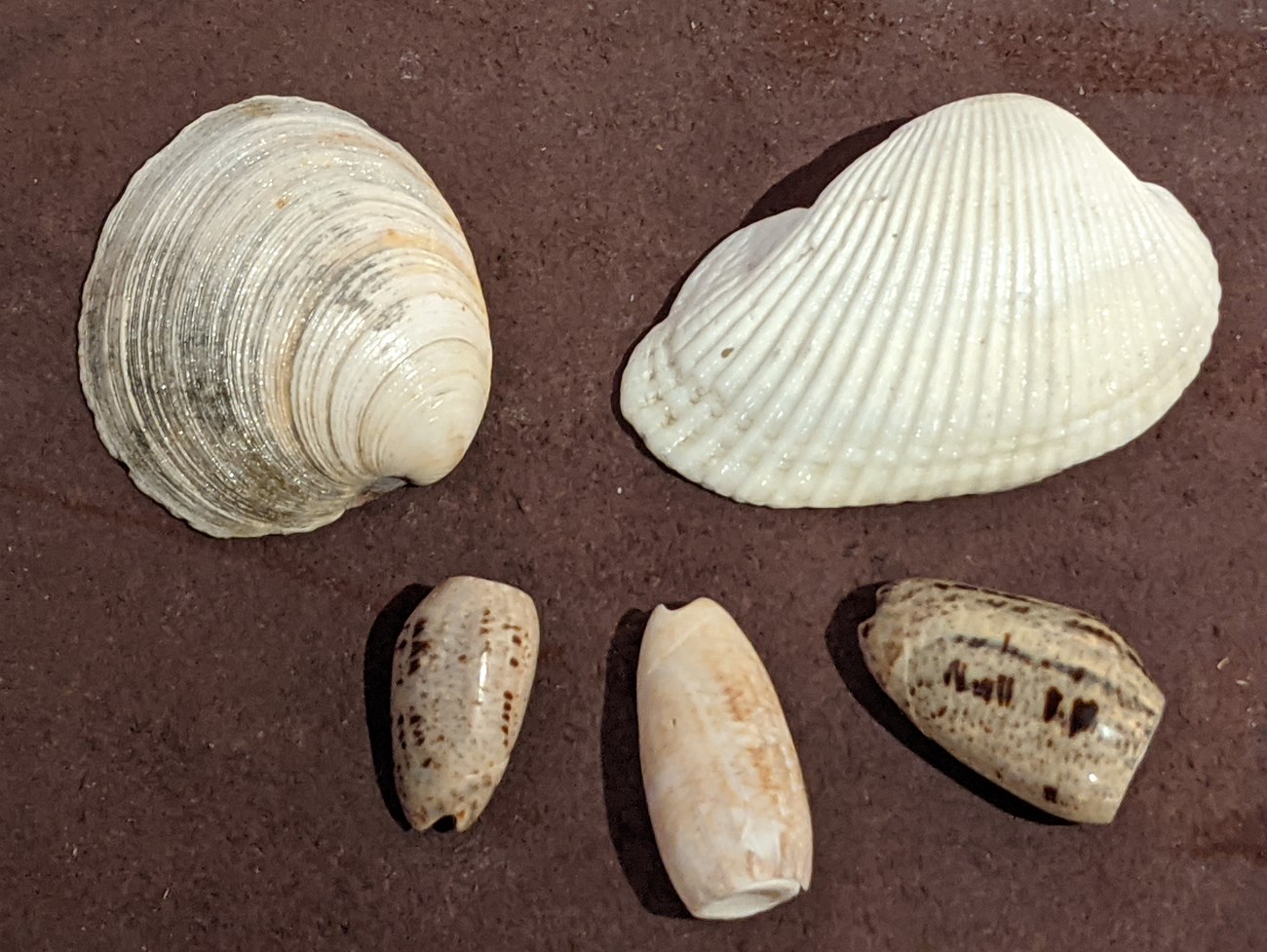
Nicoletta Browne, NPS What Did They Have to Trade?The people at Aztec acquired many essential or valuable materials like cotton, shells, macaw feathers, and copper via trade. But what did they trade in return for these objects?Since the ancestral Pueblo people lacked a written language, there are no direct records of what was given to people in exchange for items like the ones mentioned above. A few possibilities exist, however. For example, Aztec Ruins and the modern town of Aztec are next to the Animas River, and close to where the Animas, La Plata, and San Juan rivers converge. The proximity to water sources and relatively fertile soil make this a good area for farming, and the ancestral Puebloans also dug irrigation canals that allowed an even larger area of land to be cultivated. Some of the goods traded in return for shells, copper, and other items may have been surplus corn, squash, and beans grown on the farms surrounding the Great House. On a related note, it seems very likely that farmers at Aztec helped feed the population that lived in and around Chaco, since there is far less water and arable land there. Clay was also readily available in this area, and the archaeological record has revealed a plethora of finely-crafted pottery made by the people who lived here. Perhaps the pottery that was made here was among the goods that were traded to outsiders. 
Nicoletta Browne, NPS Extensive Trade NetworksOur modern society depends on extensive trade networks, both within one's own country and internationally, and likewise, the ancestral Pueblo people who lived at Aztec made use of resources both near and far. The diagram below illustrates the different areas from which they obtained the materials outlined on this page. Hopefully, it helps illustrate the massive degree to which they interacted with people from afar, both within the Four Corners region and far beyond.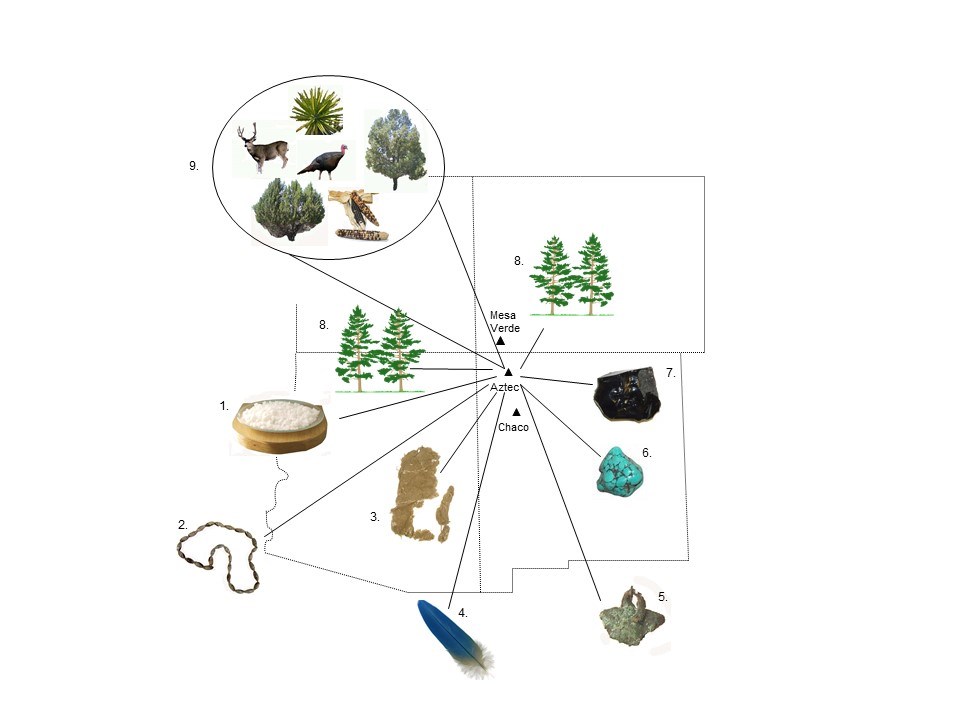
NPS Graphic
Map Legend:
|
Last updated: September 17, 2022
